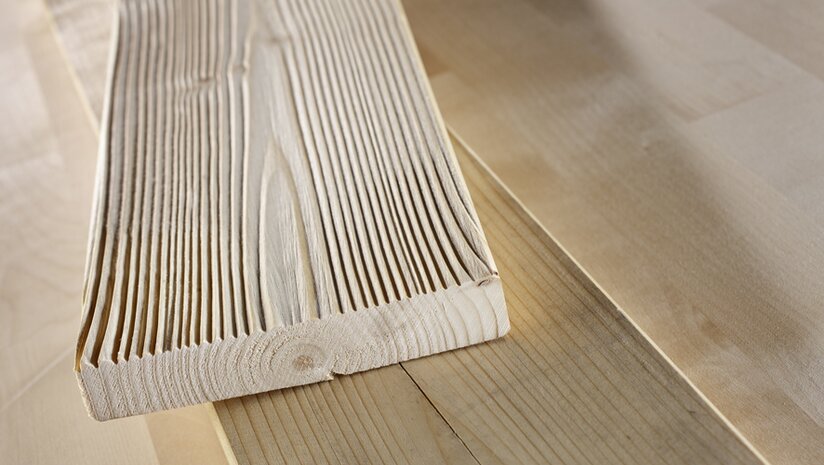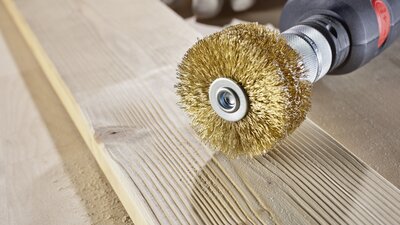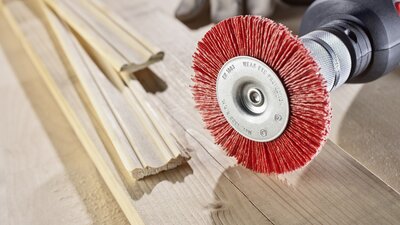
Texturing wood
Wood surfaces are very much in demand in interior design. Brushed or structured wood and surface with wood texture are interesting design elements.
How do I texture wood?
Attractive wood surfaces are a popular style element in interior design. Brushed or structured wood, wood with a rustic effect or surfaces with a wood relief create a feeling of warmth and closeness to nature to the observer. They appear more alive.
Depending on the type of wood, the effect achieved by brushing the wood surface can be coarser or finer, more obvious and dominant or more restrained.
The growth of a tree produces different layers of wood. The wood that grows in spring is softer, the wood in late summer and autumn is harder. This is how the distinctive annual rings are formed on a tree.
When structuring wood, the soft wood components are brushed out with a brush. The "hard" wood remains. Depending on the type of wood and the tools used for brushing, the hard wood components emerge more prominently from the surface. This is ultimately the wood structure.

Textured Wood - brushing away the soft wood
What do I have to consider when texturing wood?
A high removal rate is achieved with wire brushes. Hand brushes, but also brushes for drills or angle grinders or stationary machines can be used for structuring wood. Brushes with brass wire or brass-plated wire are usually used.
Always brush with the grain of the wood, not across it. Wood types that naturally contain tannic acid, such as oak, but also birch, react with the iron contained in steel wire bristles. Brown spots then appear on the wood. You should therefore use stainless steel wire for this wood.
Fine work can be further processed with abrasive trimming materials after treatment with a wire brush.

